As someone who’s always sought simplicity, I’m captivated by the tiny house lifestyle. It’s not just about the size of the house, but a shift in mindset and breaking free from consumerism.
By living intentionally, prioritizing experiences over possessions, and questioning societal norms, the tiny house movement offers a path to fulfillment.
Join me on this journey as we explore the financial considerations, design solutions, and overall impact of this alternative way of living.
Let’s break free from consumerism and create a sustainable life.
The Power of Intentional Living
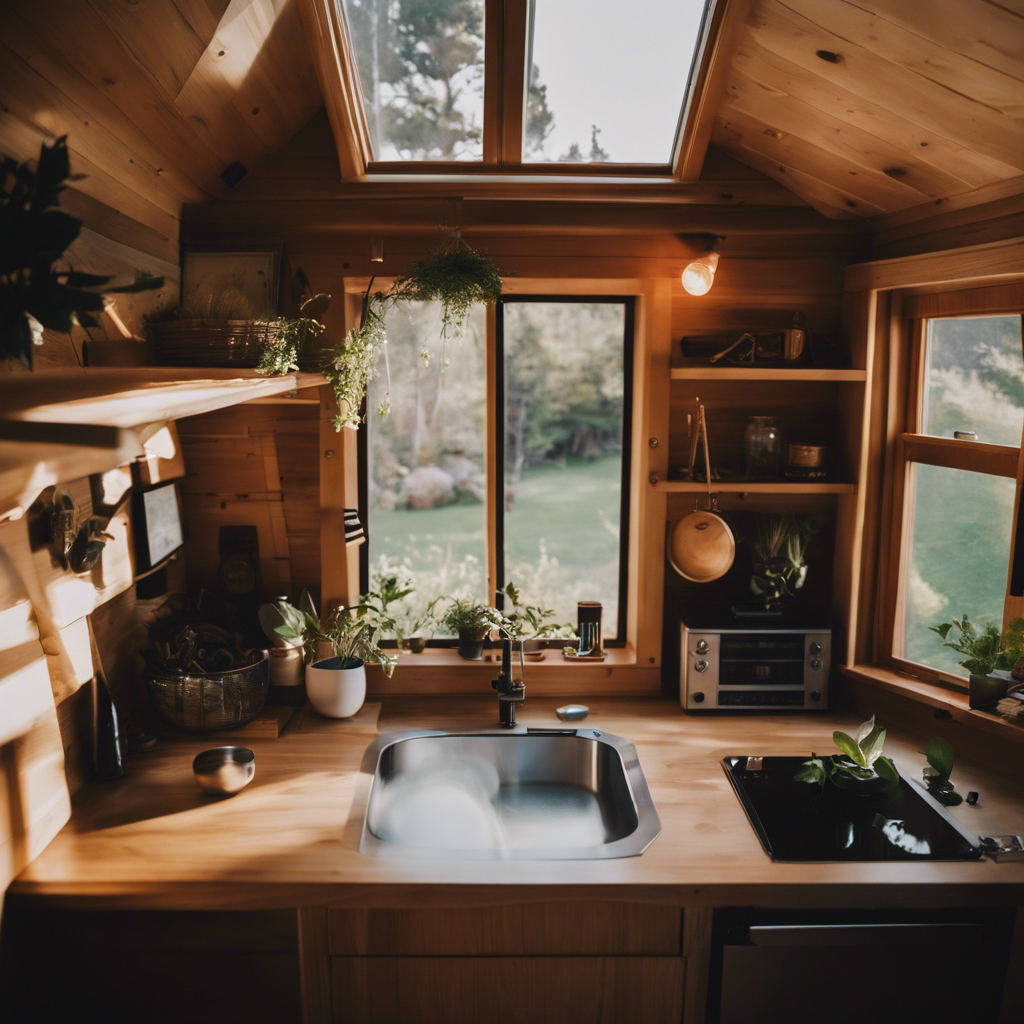
I believe that intentionally simplifying our lives and focusing on what truly matters can lead to a greater sense of fulfillment and happiness.
In today’s fast-paced world, mental clarity is often overshadowed by the constant barrage of distractions and obligations.
However, by making intentional choices and consciously deciding what adds value to our lives, we can cultivate a sense of purpose and contentment.
Intentional living allows us to cut through the noise and prioritize our mental well-being. It empowers us to create a life that aligns with our values and brings us joy.
By simplifying our surroundings and letting go of excess, we free up mental space to focus on what truly matters.
It’s through intentional choices that we can find mental clarity and live a more fulfilling life.
Financial Freedom Through Minimalism
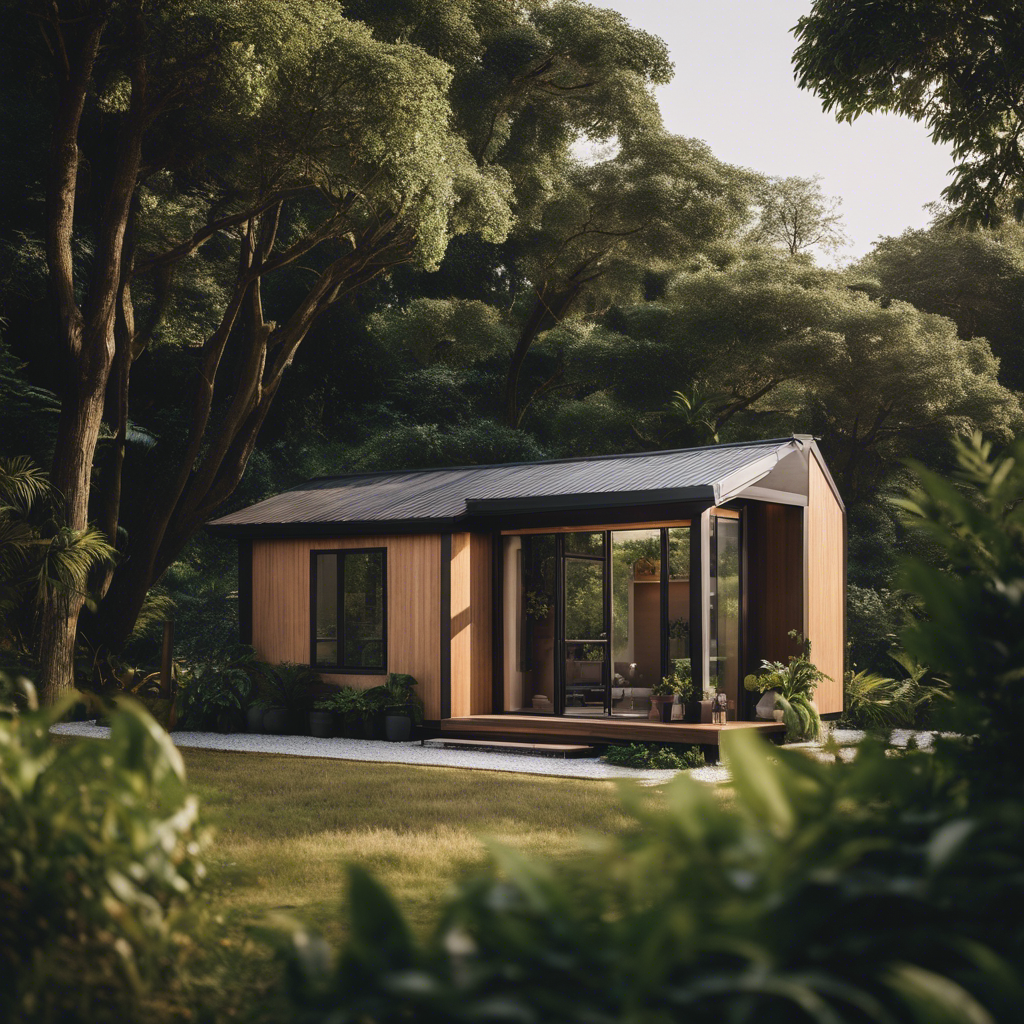
Achieving financial freedom through minimalism allows for a more intentional and fulfilling life. When we prioritize minimalist finances, we can truly live intentionally and make deliberate choices with our money. Here are four key points to consider:
-
Simplify expenses: By adopting a minimalist approach to our finances, we can streamline our expenses and focus on what truly brings us value and joy. This means cutting back on unnecessary purchases and prioritizing mindful spending.
-
Debt reduction: Minimalist finances encourage us to pay off debt and avoid accumulating unnecessary financial burdens. By living within our means and prioritizing debt repayment, we can free ourselves from the stress and limitations that come with owing money.
-
Savings and investments: Living intentionally means setting aside money for savings and investments. By building an emergency fund and investing wisely, we can create a secure financial future and have the freedom to pursue our passions and goals.
-
Mindful consumption: Minimalist finances emphasize mindful consumption, which means being intentional about our purchases and avoiding mindless spending. By focusing on quality over quantity and buying only what we truly need and value, we can save money and reduce our environmental impact.
Overcoming the Challenges of Tiny Living
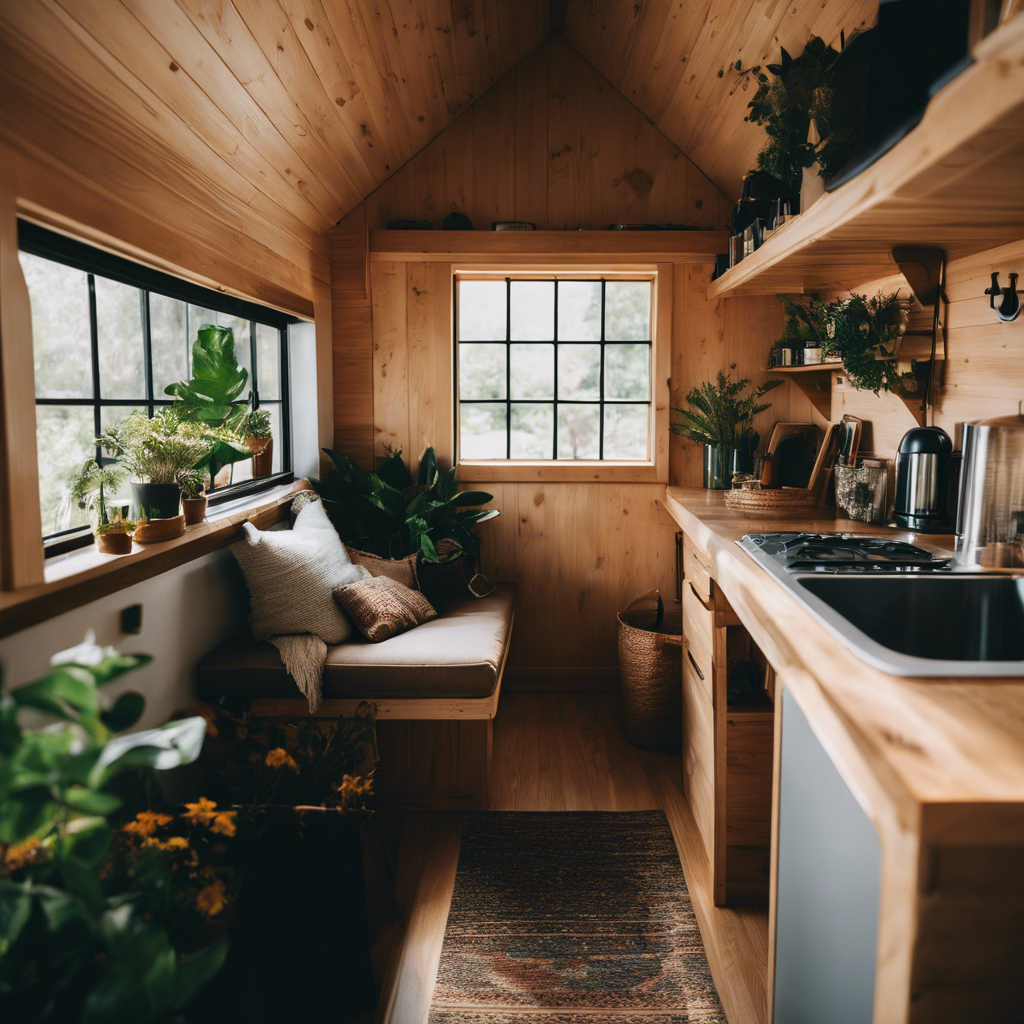
Maximizing storage solutions and maintaining organization are key to overcoming the challenges of tiny living. In a tiny house, every square inch matters, and finding efficient ways to store belongings is crucial. To evoke emotion and inspire mastery, let’s take a closer look at the impact of maximizing storage and maintaining privacy in a tiny house.
| Challenge | Solution | Emotional Impact |
|---|---|---|
| Limited storage space | Utilizing vertical space | Resourcefulness |
| Lack of privacy | Creative room dividers | Comfort and tranquility |
| Hosting guests | Multi-functional furniture | Warmth and hospitality |
Innovative Design Solutions for Tiny Homes
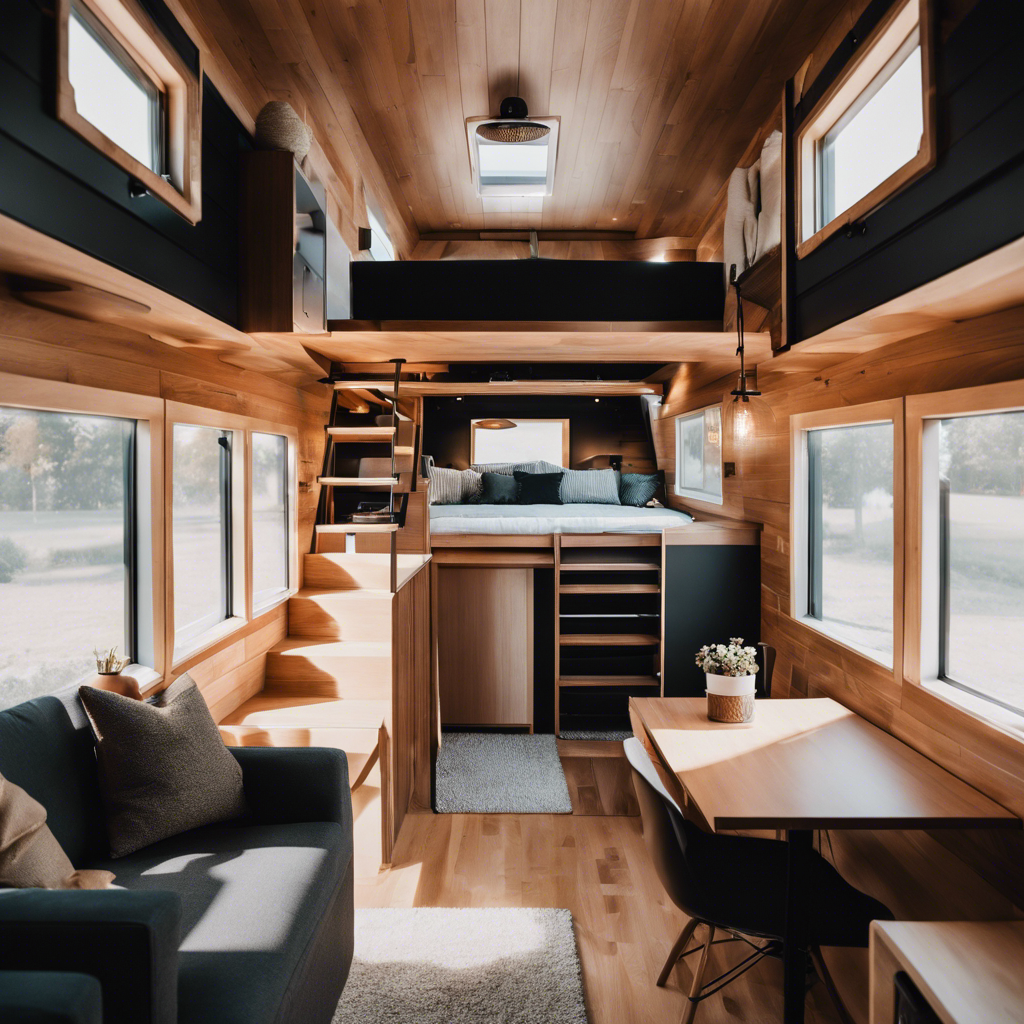
One of the innovative design solutions for tiny homes is incorporating clever storage solutions while prioritizing natural light and ventilation. This not only maximizes space optimization but also creates a comfortable and inviting living environment.
When it comes to innovative design solutions, there are several key elements to consider:
-
Multi-functional furniture: Investing in furniture that serves multiple purposes, such as a bed with built-in storage or a dining table that can be folded away, is essential for maximizing space in a tiny home.
-
Vertical storage: Utilizing vertical space is crucial in tiny house design. Installing shelves, hooks, and cabinets on walls can help keep belongings organized and easily accessible.
-
Window placement: Placing windows strategically allows for the influx of natural light, making the space feel larger and more open. Additionally, incorporating windows that can be opened promotes ventilation, improving air quality.
-
Hidden storage solutions: To further optimize space, incorporating hidden storage solutions, such as under-bed drawers or stairs with built-in compartments, can help keep belongings out of sight while still easily accessible.
The Environmental Impact of the Tiny House Movement

Sometimes, the environmental impact of the tiny house movement is overlooked, but it’s crucial to consider how these smaller homes can contribute to sustainability efforts.
Tiny houses offer numerous environmental benefits that promote sustainable living. Firstly, their smaller size means they require fewer resources to build and maintain, resulting in reduced energy consumption and carbon emissions.
Additionally, tiny houses encourage a minimalist lifestyle, where individuals prioritize essential needs over excessive consumption. This shift in mindset helps to reduce waste and conserve resources.
Furthermore, many tiny house owners incorporate eco-friendly features such as solar panels, rainwater collection systems, and composting toilets, further minimizing their ecological footprint.
Redefining the American Dream: Homeownership in a Tiny House
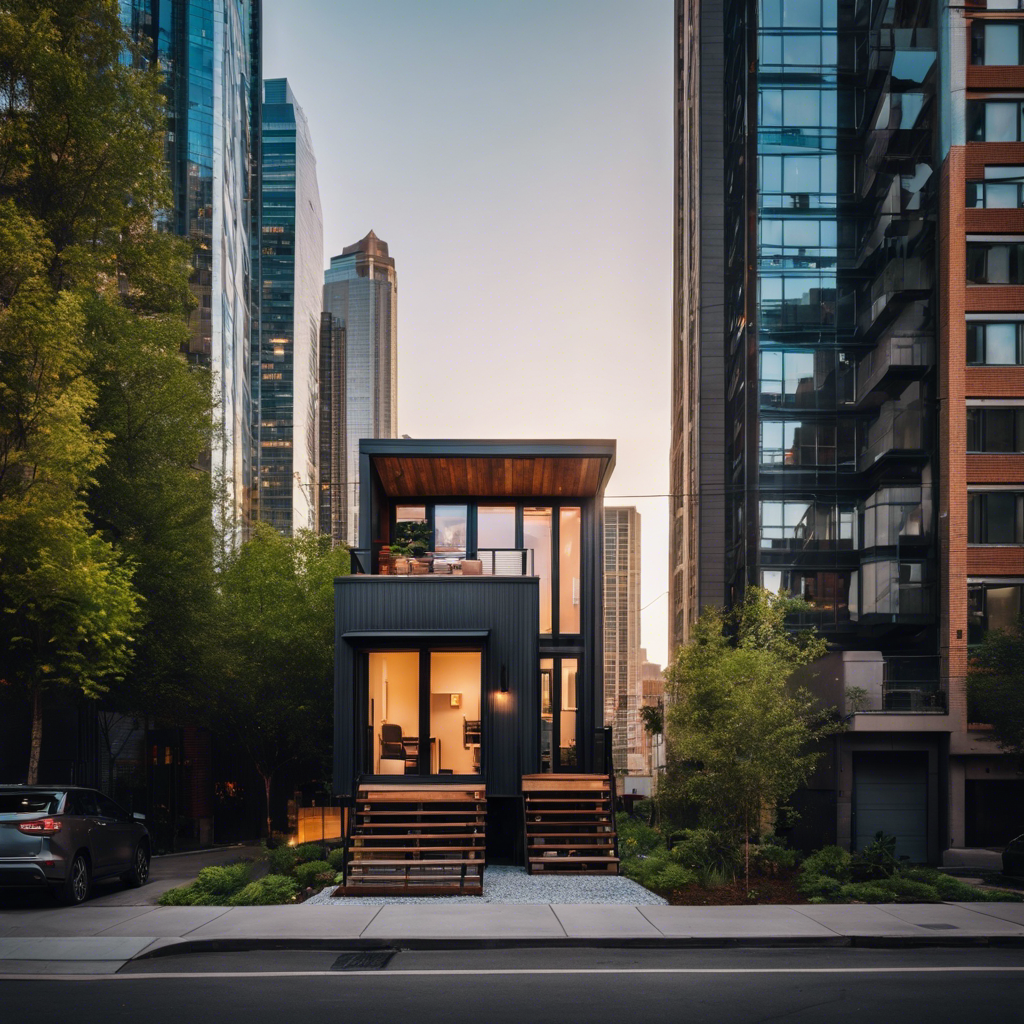
Interestingly, redefining the American Dream to include homeownership in a tiny house can challenge societal norms and foster a more sustainable lifestyle. This shift in perspective encourages us to rethink traditional ideas of success and happiness.
By downsizing our dreams and embracing the simplicity of tiny house living, we can prioritize experiences and relationships over material possessions. Here are four key reasons why redefining the American Dream through tiny house homeownership is worth considering:
-
Financial freedom: Living in a tiny house allows for a significant reduction in housing costs, which can free up resources for other important aspects of life.
-
Environmental sustainability: Tiny houses have a smaller ecological footprint, promoting a more environmentally conscious way of living.
-
Flexibility and mobility: The compact size of tiny houses offers the freedom to easily relocate and explore new places without being tied down by a traditional mortgage.
-
Minimalist mindset: Downsizing dreams and living in a tiny house encourages a simpler, clutter-free lifestyle, promoting mindfulness and intentional living.
Sustainable Living: A Path to a More Fulfilling Lifestyle

Living a sustainable lifestyle not only benefits the environment but also promotes a more fulfilling and conscious way of living. When we embrace sustainable architecture and eco-friendly living practices, we’re making a positive impact on the planet and our own well-being.
Sustainable architecture focuses on using renewable resources, minimizing waste, and reducing energy consumption. By incorporating these principles into our homes and communities, we can create spaces that aren’t only aesthetically pleasing but also contribute to a healthier and more sustainable environment.
Eco-friendly living goes beyond just our physical surroundings, it extends to our daily choices and habits. From reducing waste and conserving energy to supporting local and organic products, every small action we take adds up to make a big difference.
Finding Freedom in a Smaller Space

I truly appreciate the sense of liberation that comes with living in a smaller space. It has allowed me to embrace simplicity and find joy in minimalism. Here are four reasons why I believe that embracing a smaller space can lead to a more fulfilling lifestyle:
-
Embracing simplicity: Living in a smaller space forces us to declutter and prioritize what truly matters. We learn to let go of material possessions that no longer bring us joy, and instead focus on the things that truly enhance our lives.
-
Mindful living: With limited space, we become more conscious of our consumption habits. We learn to be more intentional with our purchases, only bringing in items that truly serve a purpose and bring value to our lives.
-
Financial freedom: Living in a smaller space often means lower expenses, allowing us to prioritize experiences over material possessions. We can save money, pursue our passions, and live a more fulfilling life.
-
Environmental impact: By living in a smaller space, we reduce our ecological footprint. We consume fewer resources and produce less waste, contributing to a more sustainable future.
Embracing Creativity and Resourcefulness in Tiny Living

In my experience, embracing creativity and resourcefulness in tiny living has allowed me to find innovative solutions to maximize space and make the most out of my compact home.
Resourceful living has become a way of life for me, as I constantly seek out creative solutions to the challenges of living in a small space.
From utilizing multi-functional furniture to incorporating clever storage solutions, I’ve learned to think outside the box and make the most of every inch.
It’s amazing how a little creativity can go a long way in transforming a tiny house into a functional and stylish home.
Long-Term Solutions: The Viability of the Tiny House Lifestyle
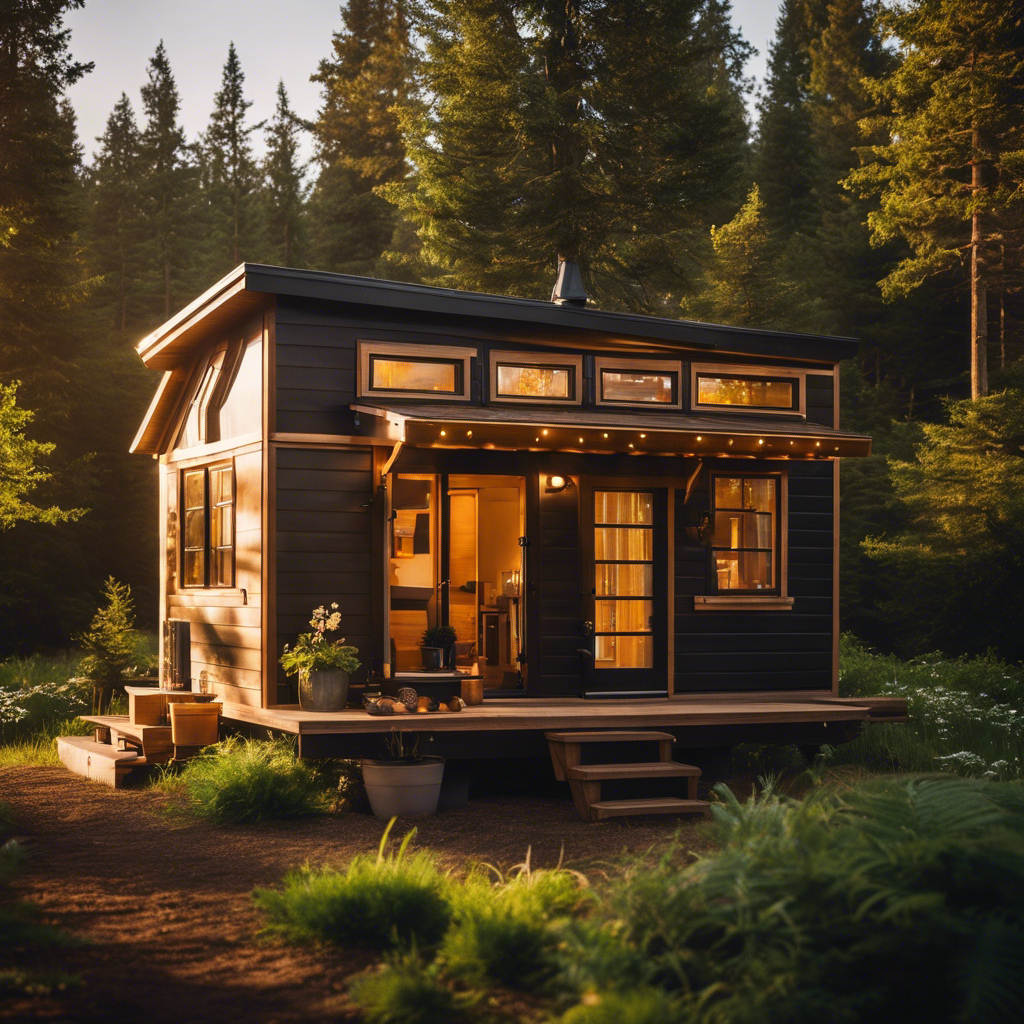
After careful consideration, I’ve come to realize that the long-term viability of the tiny house lifestyle hinges on adapting to changing circumstances and continuously finding ways to thrive in a limited space. It isn’t enough to simply downsize and live in a tiny house; we must also consider the financial benefits that come with this lifestyle.
Here are four key points to consider:
-
Viability of downsizing: Downsizing to a tiny house can lead to significant financial savings in the long run. With reduced living expenses, such as lower utility bills and minimal maintenance costs, individuals can allocate more funds towards their long-term goals.
-
Long-term financial benefits: By embracing a minimalist lifestyle, individuals can focus on what truly matters and prioritize their financial well-being. With less space to fill, there’s a decreased temptation for unnecessary spending, leading to increased savings and financial security.
-
Adapting to changing circumstances: The key to the long-term viability of the tiny house lifestyle is the ability to adapt to changing circumstances. As life evolves, individuals may need to modify their tiny house to accommodate new needs or even consider transitioning to a larger space. Flexibility is essential to ensuring the continued success of this lifestyle.
-
Thriving in a limited space: Living in a tiny house requires creativity and resourcefulness to make the most of limited space. Utilizing smart storage solutions, maximizing vertical space, and embracing multi-functional furniture are all strategies that can help individuals thrive in their tiny homes.
Frequently Asked Questions
How Can Intentional Living Help Break Away From Consumerism Norms?
Intentional living and mindfulness are key to breaking away from consumerism norms. By consciously considering our purchases and focusing on what truly matters, we can reduce mindless consumption and live a more intentional, fulfilling life.
Can Financial Freedom Be Achieved Through Minimalism in a Tiny House Lifestyle?
Financial freedom can be achieved through minimalist budgeting in a tiny house lifestyle. By downsizing, I’ve experienced the benefits of reduced expenses and increased savings. It’s a transformative journey towards intentional living and financial independence.
What Are Some Strategies for Overcoming the Challenges of Living in a Tiny House?
Overcoming challenges of living in a tiny house requires creative storage solutions. Maximizing vertical space and utilizing multi-functional furniture are key strategies. It’s about finding innovative ways to make the most of limited space.
What Are Some Innovative Design Solutions That Can Maximize Space in Tiny Homes?
Innovative storage solutions and multi-functional furniture are key in maximizing space in tiny homes. By utilizing smart design choices, such as hidden compartments and foldable furniture, I can create a functional and efficient living space.
How Does the Tiny House Movement Contribute to Sustainable Living and Reducing Material Consumption?
The tiny house movement contributes to sustainable living and reducing material consumption. By embracing a minimalist lifestyle and living in smaller, eco-friendly spaces, we can have a smaller ecological footprint and make a positive impact on the environment.
Conclusion
In conclusion, the tiny house lifestyle offers a refreshing alternative to the consumer-driven society we live in. By embracing intentional living, minimalism, and sustainable practices, we can break free from the confines of consumerism and create a more fulfilling and sustainable life.
The theory that living with less can lead to greater freedom and happiness holds true in the tiny house movement. It’s time to question societal norms and embark on a journey towards a simpler, more intentional way of life.


